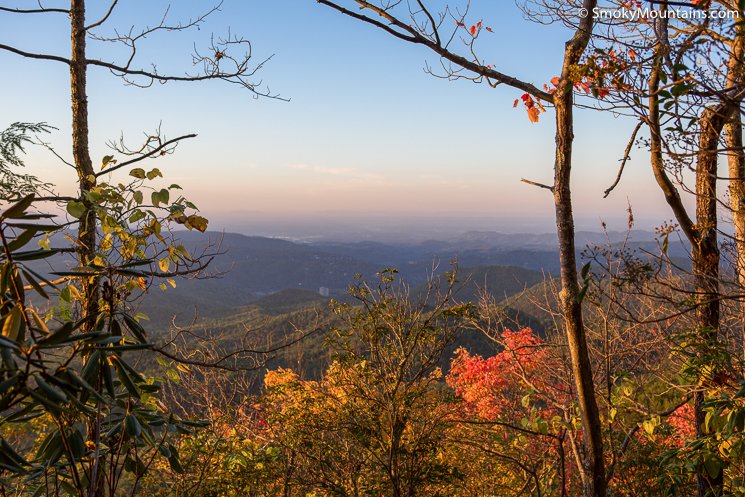It seems like fire season is always just around the corner. Even when it’s not, it’s important to maintain an active approach to guarding your home against the dangers of wildfires.
Fires are no joke, and they’ve been increasing over the last few decades. According to the Congressional Research Service, “Since 2000, an annual average of 70,025 wildfires have burned an annual average of 7.0 million acres. The acreage figure is more than double the average annual acreage burned in the 1990s.”
This doesn’t just affect national parks and public lands, though. Plenty of residential areas get caught in the maelstrom, including those in the Smoky Mountains. For that reason, it’s important to prepare yourself for fire, even if you haven’t yet been a victim.
In this post, we’ll take a look at the best ways to protect your house and property from fires in the Smoky Mountains, from creating defensible space to planning for water access and staying safe inside your home. Don’t wait any longer to fireproof your home … and your life!
Create Defensible Space

The best strategy you can use to protect your home from wildfires is to create defensible space around the home. Otherwise known as a firebreak, this space is clear of flammable plants, household items, materials, and debris.
By removing such items, you help limit the chances that fire has to “jump” from surrounding areas to your home. Although it’s always a bummer to have fire rip through your property, it’s exponentially worse to lose your home.
You can create defensible space by:
- Refraining from planting anything within 5 feet of your house. Instead, use decorative rocks or nonflammable mulch to tie the landscape together near your home, then begin your garden 5 feet out.
- Keep lawns and plants watered. Although it’s better for water conservation not to have a lawn at all, if you must have one and you live in a wildfire-prone area, keep it green all summer.
- Remove limbs that overhang your house. Any limb that’s within 10 feet of your house has to go. Make sure to get your trees limbed during the appropriate time of year to prune the species, though. Otherwise, you risk the plant becoming unhealthy or dying, which increases dead, flammable material around your home.
- Remove all combustible home items from a 30-foot radius. Gas, oil, paint thinner, and other combustible products may not only explode in a fire, but they can also give fire fuel to help it jump from nearby to your home. Remove them and always keep home gas tanks at least 30 feet from the house.
Maintain a Fire-Resistant Yard

It’s not enough to clear out potentially hazardous items from the 30-foot zone, though. Your yard needs to be safe 100 feet out, as this is the distance at which heat from wildfires can cause your home to spontaneously catch fire even if no flames or embers come into contact with it.
Smokey Bear recommends that you “Keep flammable objects (lawn mowers, oil or gas cans, propane tanks, and wood piles) at least 30 feet away from the home at all times.”
Additionally, remove dead material from plants within 100 feet of your home. If you don’t intend to maintain the plant, you should remove it from your yard entirely. If you have large trees, you obviously can’t remove all dead leaves and needles from the previous season, but you should have an arborist out to take down dead limbs as soon as possible. The same goes for snags or dead trees.
Plan Water Access

Some wildfires aren’t menacing enough to make you leave, but can still pose a threat to your property. Set yourself up for firefighting by planning for water access ahead of time.
The Federal Emergency Management Agency (FEMA) advises homeowners to “Purchase and install external sprinkler systems with dedicated power sources or a water tank if no water source is available. Connect garden hoses long enough to reach any area of the home and fill garbage cans, tubs, or other large containers with water.”
Seal Off Smoke Entry Points

Even if your home and yard don’t catch on fire, you and your family and pets may be in danger from smoke exhalation. The solution? Don’t let it get in.
Make sure to keep all access points to the home well sealed off by using weatherstripping around all doors and windows. If you have a pet door, make sure it has a good seal. Look for gaps in the exterior wall – especially where cables and utility connections pass through – and seal them with caulk, mortar, or foam.
FEMA says to “Fill large gaps with heat-expanding sealant or fire-protective sheets or pillows.”
Help Firefighters Out

If your home catches fire or is in danger of doing so, you want firefighters to be able to do their job. You can help them out by making sure all addresses are clearly marked so they can quickly find your home when they get called out.
Make sure too that they can access your home. That means keeping driveways and street-front areas clear of unnecessary objects that might hinder the truck from parking, as well as ensuring appropriate overhead clearance so they can pull up to your house.
Put a Fire Plan in Place

It’s not only your home that’s in danger during a wildfire; it’s also your pets and family. Makes sure the entire family knows what to do in an emergency and can follow through on the plan.
Establish a meeting place in case you have to evacuate from different places. You should pick a meeting place nearby and another in a distant enough area that it’s unlikely to be affected by fires. Make sure that during wildfire season all members of the family have a device to help them communicate with one another. Do not go on vacation and leave pets unattended in homes – even cats that can feed themselves – if there is any danger of fire cropping up while you’re gone.
Overall, it takes a little planning to reduce your fire danger, but it’s well worth the effort!




